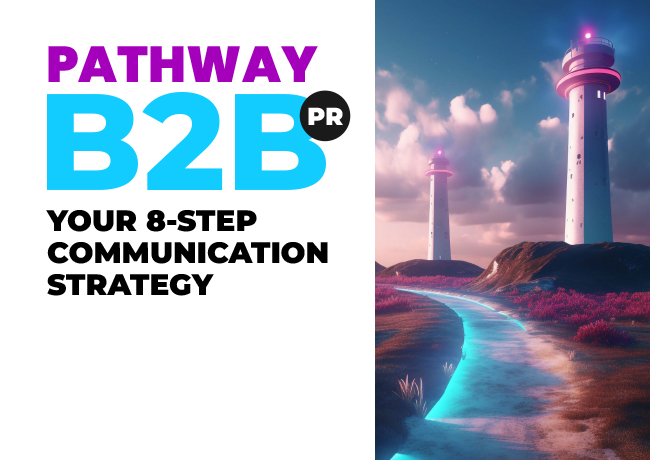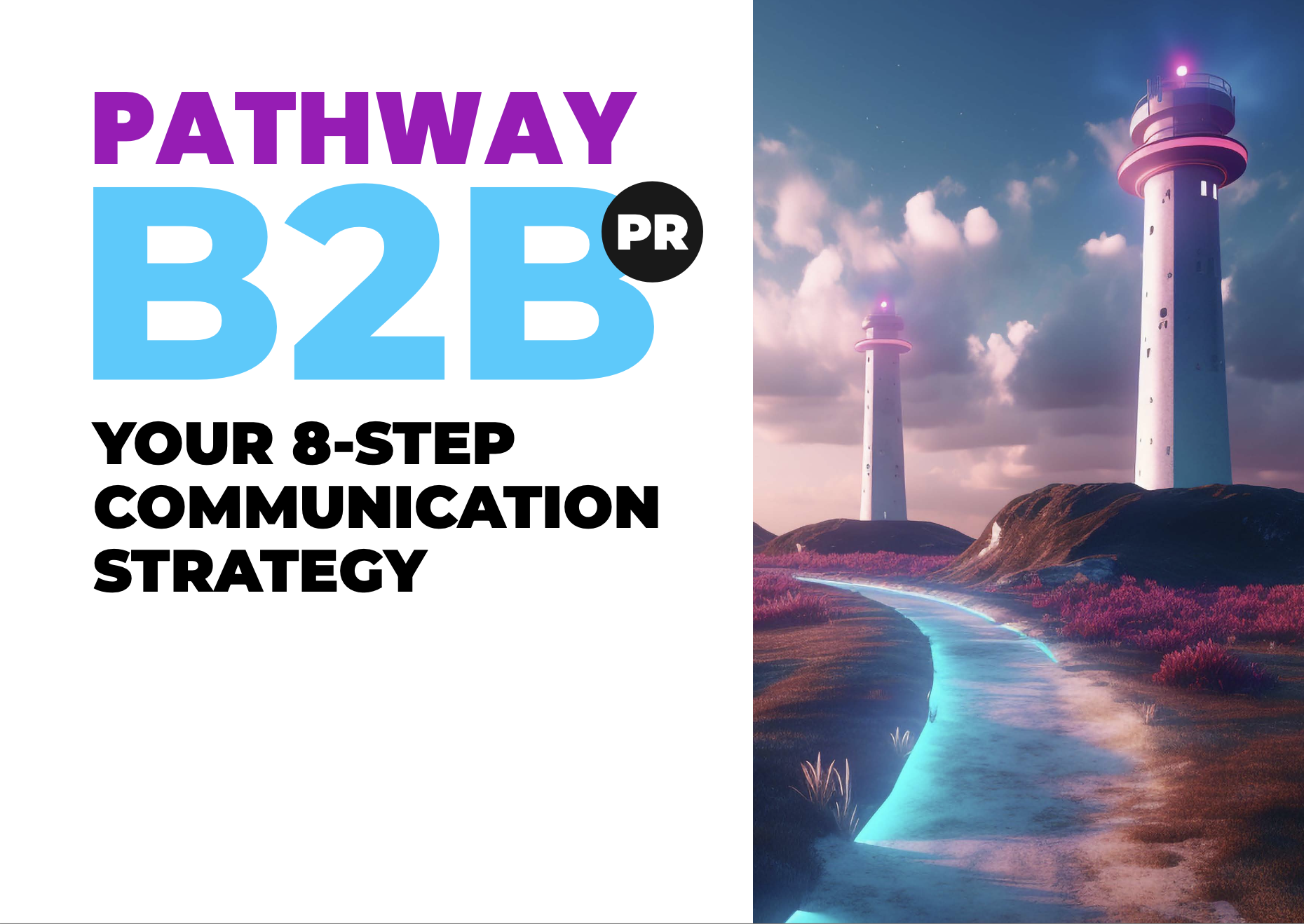
How to write an effective positioning statement for your tech brand
Key takeaways
A positioning statement is a powerful part of your communication strategy that defines your product’s unique value versus your competitors. To write an effective positioning statement you need to identify your target audience, clarify your brand’s uniqueness, articulate key benefits and connect with your brand’s essence, all in one concise specific statement. Find out below how we do this at EC-PR with our step-by-step guide to writing a tech brand’s positioning statement with examples.
What is a positioning statement?
A positioning statement is an internal guide that defines how a product fits in the market and against competitors. It’s a formal declaration used in marketing to communicate the unique value you offer to your customers in the context of competitive offerings.
The difference between a positioning statement and a value proposition
On the other hand, a value proposition communicates the primary reasons a product or service best suits a particular customer segment.
Understanding the nuances between a positioning statement and a value proposition is important for any tech business aiming to distinguish itself in a competitive market.
Both a positioning statement and a value proposition are foundational elements of marketing and communication strategy. As strategic statements, unlike a mission or vision statement, they are rarely worded, in the first instance, in a way that is immediately publishable. Wordsmithing may well be required once the essence has been identified.
What you need to know to write a positioning statement for your tech brand
To craft your positioning statement for your tech brand, you need absolute clarity around:
- Your target personas psychographic and demographic profiles.
- Your point of desirable difference, pertinent to each persona segment.
- The advantage you deliver that’s relevant to them and that they will value.
- Your core brand values.
Here’s how you can write an effective positioning statement:
Identify your target audience:
Define who your ideal customers are. Understanding your target audience’s demographics, needs, and preferences helps you to tailor your positioning statement to appeal directly to them.
Segment your market: Break down your market into smaller segments based on shared characteristics. This could be based on demographics, buying motivations, geographical locations, or behaviour. Market segmentation allows you to target your marketing efforts more precisely to groups more likely to purchase from you.
Analyse competitors: Study your competitors to see who they are targeting and how they are positioning themselves. This can provide insights into gaps in the market or opportunities to differentiate your brand. Look at their customer reviews and social media activity to see what kinds of customers are engaging with them.
Evaluate product or service fit: Assess how well your product or service meets the needs of the identified target segments. Consider if modifications or enhancements are needed to serve this audience better. Think about the problems your product or service solves and match these with the needs and desires of your potential customers.
Test and refine: After defining your target audience, test your marketing messages and campaigns on smaller segments to see how they respond. Continuously gather and analyse data on the effectiveness of your strategies and refine your target audience based on real-world performance and feedback.
By following these steps, you can focus in on your target audience and communicate with them meaningfully. The result of which will be that your marketing efforts are focused and more likely to result in higher conversion rates and customer satisfaction.
2 Clarify your brand’s uniqueness:
Be specific about what makes your offering unique compared to the competition. This could be a specific feature, benefit, or customer experience you provide that is more advantageous than anyone else’s.
Make a list of strengths: Consider and capture everything you believe you do well and those things your customers believe you do well.
Research your competitors: Find out more about how your competitors differentiate themselves and what tools and tactics they use to help them stand out. This can help you identify a market gap or a USP for your business.
Compare and compile all your data: Once you’ve gathered all the information about your business and competitors, it’s time to analyse it. Brainstorming ideas can be an effective way to clarify your USP.
Market research and focus groups: Speaking to your target customers is valuable as it helps you determine what they need, want, and expect from you. You can get prospective customers to test your service and provide feedback. Analysing internet search trends and monitoring social media is also beneficial.
3Articulate key benefits:
Clearly state the primary benefit your product or service provides that meets the needs or wants of your target audience. This should connect directly with what your target audience cares about most. Don’t be vague. Don’t spread your bets – be specific!
Prioritise: It’s sometimes hard to get a consensus on which key benefit to focus on. If it was easy – everyone would do it well, and they don’t. One way of achieving the right outcome is to list your top 3-5 benefits on a board. Invite your key decision-makers to score each benefit out of 5 anonymously. They may not give any benefit an equal ranking. Once everyone has voted, the benefit which has the highest score wins. Alternatively do the same exercise with your most valuable, long-standing, customers.
Connect with your brand’s essence:
Ensure your positioning statement reflects your brand’s core values and essence. It should resonate with your brand’s overall messaging and identity.
Authenticity, credibility and resonance: Three overused and increasingly meaningless words. However, at their heart, you want customers to attach these to your brand. This can only happen if your values, your communication, and your behaviours are working in harmony. When they are out of sync, they cease to be believable, and any trust, and potential sale, vanishes.
Writing your positioning statement
💋KISS. Keep It Simple and Straightforward. A positioning statement should be concise and easy to understand. Avoid jargon and focus on clear, straightforward language that anyone can understand.
Bring all these elements together to craft a concise and powerful positioning statement. This statement should encapsulate who your target audience is, what your unique difference and competitive advantages are, and how these align with your brand values. Here’s a structure you can follow:
Statement structure
[Brand] provides [Product/Service] to [Target Audience], delivering [Unique Difference] and [Competitive Advantage], upholding [Brand Values]
This format ensures that your positioning statement is targeted, specific, and aligned with both your market and internal strategy. It serves as a guiding star for all your marketing efforts, ensuring that every piece of content and every campaign reinforces what makes your tech brand unique.
Example of drafting a positioning statement
First draft:
TechSecs provides cutting-edge cybersecurity solutions to small and medium-sized fintech companies, offering unparalleled real-time threat detection with a user-friendly interface, ensuring our customers are always a step ahead of security risks while upholding our core values of innovation, reliability, and customer-centric service.
Customer facing version:
At TechSecs, we provide unparalleled real-time threat detection and a user-friendly interface for founder directors of SMEs in the fintech space to ensure they are always a step ahead of security risks, enabling their businesses to operate securely and efficiently unlike any other cybersecurity solution in the market.
This formula helps ensure your positioning statement is focused and clear and effectively communicates your unique value proposition. EC-PR helps tech companies develop positioning statement as part of a B2B communication strategy designed to bring you competitive advantage.
Get in touch for more information. Or download our Pathway: 8 Simple Steps to a B2B Communication Strategy guide and get started on your comms strategy today!

Your 8-Step Communication Strategy Guide
A comprehensive guide to delivering your business goals using intelligent and relevant messaging.
Our insights
Subscribe to our updates
Stay up to date with the latest insights, case studies and PR guides.


